Memory card games for children have been around for generations, providing an engaging and interactive tool for learning and cognitive development. These games not only offer hours of entertainment but also help children sharpen their memory skills, enhance concentration, and foster essential problem-solving abilities. With a wide range of options from simple matching pairs to more complex categorization and trivia-based games, memory card games cater to various age groups and interests, making them an excellent addition to any child’s educational toolkit.
Introduction to Memory Card Games
Memory card games have been around for centuries, with their history dating back to ancient civilizations, like those of Egypt and China. They were initially played primarily by adults and used as a means for social interaction, entertainment, and even gambling. Over time, however, people began realizing the potential these games held in aiding cognitive development in children, particularly in enhancing memory skills, concentration, and attention.
The purpose of memory card games goes beyond merely keeping children entertained. These games aim to help children develop important cognitive skills, such as pattern recognition, sequencing, and categorization. Additionally, memory card games require children to practice and refine their short-term and long-term memory skills and develop strategies to enhance information recall, all of which are critical skills for success in school and other learning environments.
The reason memory card games are especially effective in aiding children’s cognitive development is due to how they engage multiple areas of the brain simultaneously. They stimulate and strengthen neural connections that assist in memory retention and retrieval, as well as attention and focus. Most memory card games also involve a certain level of strategy, which helps nurture problem-solving abilities and critical thinking skills in children as they analyze patterns, draw inferences, and plan their moves.
Memory card games come in a wide variety of formats, each offering a unique way to challenge and develop children’s cognitive abilities. Some popular and easy-to-learn memory games include matches, concentration, and pairs. These games require players to flip over two cards at a time and try to find matching pairs, thus providing excellent opportunities for children to practice their visual perception and memory recall. Board games like Memory and card games like Go Fish and Old Maid are other examples of games that help children build strong memory and concentration skills.
In recent years, technology has played a significant role in enhancing the accessibility and variety of memory card games for children. Many apps and online platforms now offer interactive, educational, and engaging memory card games designed specifically for children. This advancement not only makes these games easily accessible worldwide but also provides parents with a convenient tool to help their children develop essential cognitive skills while having fun.
Memory card games have been around for many years and are popular amongst children for their educational and entertaining value. One of the most classic types of memory card games is related to matching pairs. In this type of game, players take turns flipping over cards to find and match identical images. This helps to boost children’s memory, focus, and concentration, as well as their visual discrimination skills. Matching pairs games are suitable for children ages 3 and up.
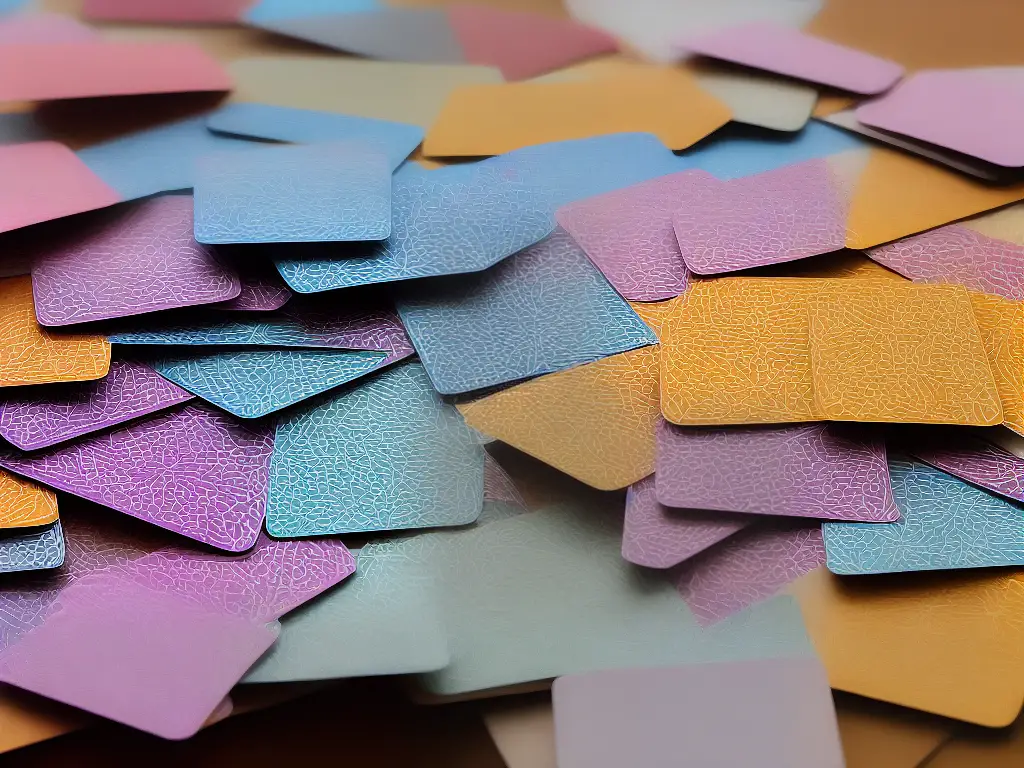
Types of Memory Card Games
Overall, memory card games, especially those enhanced by technology, are a valuable resource for promoting healthy cognitive development in children and preparing them for future success in academics and life in general. By combining entertainment with essential skill development, these games provide an enjoyable way for children to grow and learn. As these games continue to evolve and become more accessible, parents can utilize them as tools to supplement their child’s education and cognitive development.
Another popular type of memory card game involves sequencing. In these games, children are tasked with arranging cards in a specific order, such as alphabetically, numerically, or according to a pattern. Some of these games also incorporate storytelling elements, which add an additional layer of cognitive development as children must follow the narrative structure while completing the sequence. Sequencing games are particularly beneficial for older children, ages 5 and up, as they encourage critical thinking, problem-solving, and logical reasoning skills.
Categorization memory card games are excellent tools for developing sorting and classification skills. In these games, children must group cards together based on a shared attribute, such as color, shape, or subject matter. This process helps children to identify similarities and differences among objects and concepts, which is crucial for their overall cognitive development. These types of games are appropriate for children of varying age groups, with simpler categorization games available for children as young as three, and more complex versions for older children.
Memory card games that incorporate trivia are an engaging way to encourage children to learn and retain information. These games present various questions related to topics such as history, geography, or science, and the players must answer these questions based on the information provided on the card. As children progress through the game, they are challenged to recall previously learned facts and apply their knowledge in new contexts. Trivia-based memory card games are usually best suited for older children, generally ages 7 and up, as they require more advanced reading and comprehension skills.
Memory card games are a fun and educational way for children to improve their cognitive skills, including memory, focus, and pattern recognition. One of the key components in memory card games is the playing cards themselves. Cardstock, which is a heavy-weight paper with a slightly glossy finish, is the most commonly used material for creating these cards. High-quality cardstock ensures that the cards are durable and can withstand multiple uses without becoming damaged or worn.

Card Game Materials and Equipment
Recently, there has been an emergence of a unique type of memory card game that combines traditional playing cards with digital technology. These games, also known as augmented reality (AR) card games, involve using a smartphone or tablet to scan cards and bring their contents to life on the screen. Using interactive content and gamified elements, these memory card games can encourage children to engage with various educational topics, offering a more hands-on approach to learning. This innovative approach to memory games caters to different age groups, with simpler games suitable for younger children and more challenging options available for older kids.
When creating memory card games for children, there are a variety of printable templates available online that feature different themes and designs. These templates often come in a variety of file formats, such as PDF, JPG, or PNG, allowing for easy customization and printing at home or at a local print shop. Parents and educators can either choose ready-made templates featuring popular children’s characters, or they can create custom designs with their own images and content, making the game more personalized and engaging for the child.
In addition to cardstock and printable templates, other necessary equipment for memory card games includes cutting tools, such as scissors or a paper trimmer, and laminating equipment. Laminating the memory cards is optional but can add an extra layer of durability and protection, especially for games that will be used frequently by young children. This step is particularly useful if the memory card game will be used in a classroom setting or if multiple children will be playing with the game, as it helps ensure the cards will remain in good condition for an extended period of time.
Alongside the card materials and printing equipment, it is essential to have adequate storage for memory card games, particularly to ensure the cards are safe and accessible when not in use. Plastic card storage boxes, zipper pouches, or even small fabric drawstring bags can be used to store and organize the memory cards. Alternatively, parents and educators can opt for using binder sleeves or pocket pages to store and arrange the cards within a binder. This option provides an added benefit, as it allows for easy viewing of all the cards at once, making it simple to switch out themes and card sets within the game.
Memory card games for children come in a variety of formats, but the basic principles remain the same – players take turns to flip over pairs of cards, trying to find matching images or words. Designing your own memory card games allows you to create a fun and engaging experience for children tailored to their interests, learning abilities, and age.
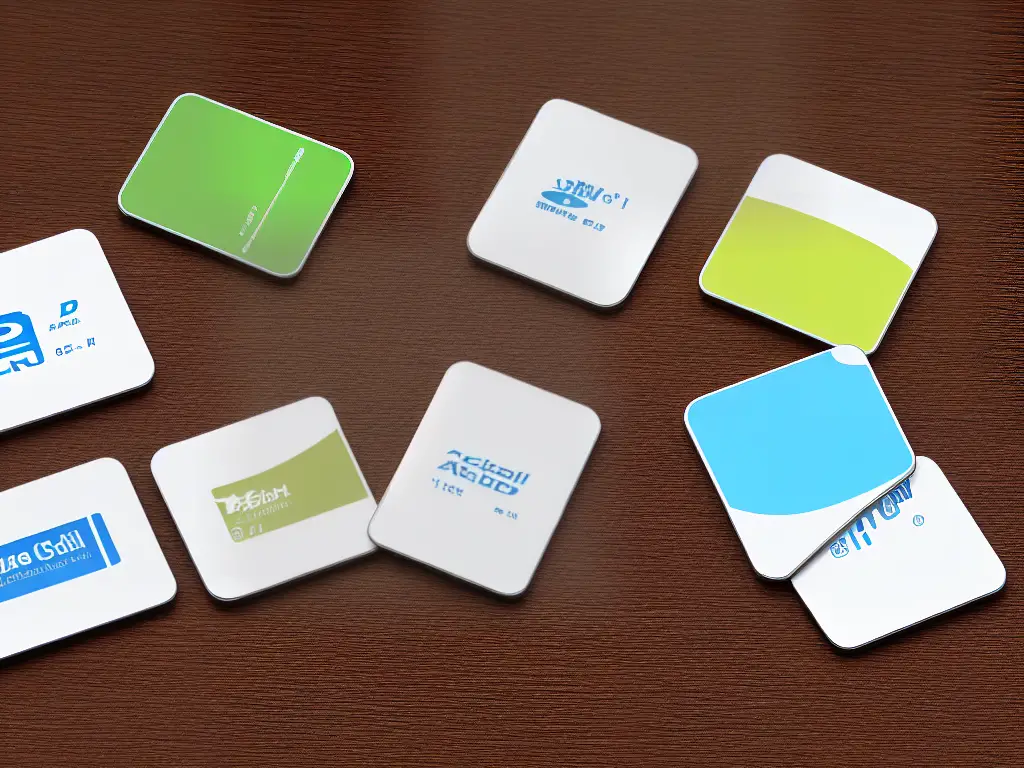
Designing Your Own Memory Card Games
One of the key advantages of customizable memory card games is that they can accommodate the unique needs of individual children. For example, a child who struggles with reading may benefit from a memory card game that features images or symbols instead of text. Conversely, a child working to improve their vocabulary could be challenged with a game featuring words or flashcards. In this way, parents and educators can use material and equipment choices to adapt memory card games to the specific learning goals and interests of each child.
The first step in designing a customized memory card game is to identify the child’s learning goals or areas of interest. This will help you choose the right subject matter, images, or words to include in the game.
In order to maintain a child’s interest and motivation throughout the game, it is important to consider the level of difficulty when choosing the concepts and images to include in the memory card game.
A game that is too easy may become boring, while a game that is too difficult may cause frustration. One way to balance the difficulty level is by adjusting the size of the card deck. For younger children or those new to memory card games, a smaller deck with fewer pairs to match may be more suitable. As the child becomes more proficient, the deck size can be increased to provide more of a challenge.
In addition to selecting age-appropriate content and adjusting the game’s difficulty, designing a memory card game offers the opportunity to incorporate educationally valuable material.
For instance, memory card games can be used to teach children about colors, numbers, shapes, and basic vocabulary words. For older children, these games can even aid in learning more complex subjects like geography, history, or a foreign language.
There are several creative approaches one can take when designing memory card games. One idea is to use personal photographs and images that the child recognizes, which can help to make the game more engaging. Another method is to design the memory game around a certain theme that interests the child, such as animals, vehicles, or characters from their favorite TV shows or movies.
Memory card games are an excellent way to teach and reinforce important concepts for children, as they can be adapted to various settings and situations. These games can be played alone or with others, using physical cards or digital applications on devices like tablets or smartphones. This adaptability allows for countless possibilities when designing memory card games that cater to the specific needs, interests, and abilities of a child, making them a valuable educational resource.
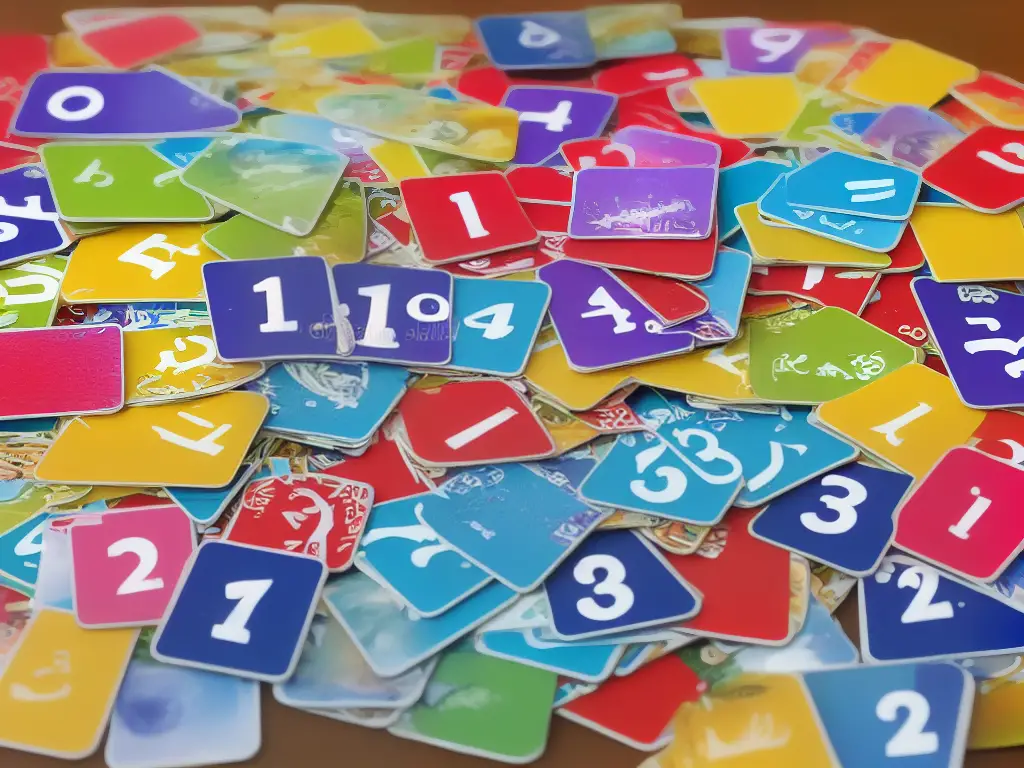
Memory Card Game Strategies
Children benefit from playing memory card games, as they provide both entertainment and education. Engaging with these games helps improve their concentration, attention, and cognitive abilities, leading to overall enhanced learning and development.
One effective strategy that children can be taught to enhance their performance in memory card games is visualization. Visualization involves taking a mental snapshot of the card upon flipping it for the first time, committing not only the image of the card to memory but also its position on the table. By doing so, children can quickly recall the card’s position when they come across a matching card.
Another useful strategy for children to improve their memory card game performance is chunking. Chunking is the process of grouping information into smaller, more manageable units. In the context of memory card games, children can chunk cards based on similar attributes such as color or image type, which will make it easier to remember the cards’ positions.
Pattern recognition is another important tactic for children to master in memory card games. By identifying patterns in the arrangement or theme of the cards, children can make educated guesses about the positions of matching cards. This technique encourages children to think critically about the game and boosts their problem-solving skills, benefiting their overall learning experience.
Encouraging children to practice active reading while playing memory card games can also improve their performance. Active reading involves reading the images on the cards aloud or describing them in detail. This will help children to better remember the cards, as well as improve their language skills.
Memory card games for children are an excellent tool to help enhance cognitive skills, such as memory, concentration, and problem-solving abilities. To engage children effectively in these games, it is essential to choose age-appropriate cards with a variety of colorful and attractive images. This will capture their interest and make learning more enjoyable for them. Encourage children to be observant and attentive by discussing the images on the cards and making connections to their daily lives or other interests.
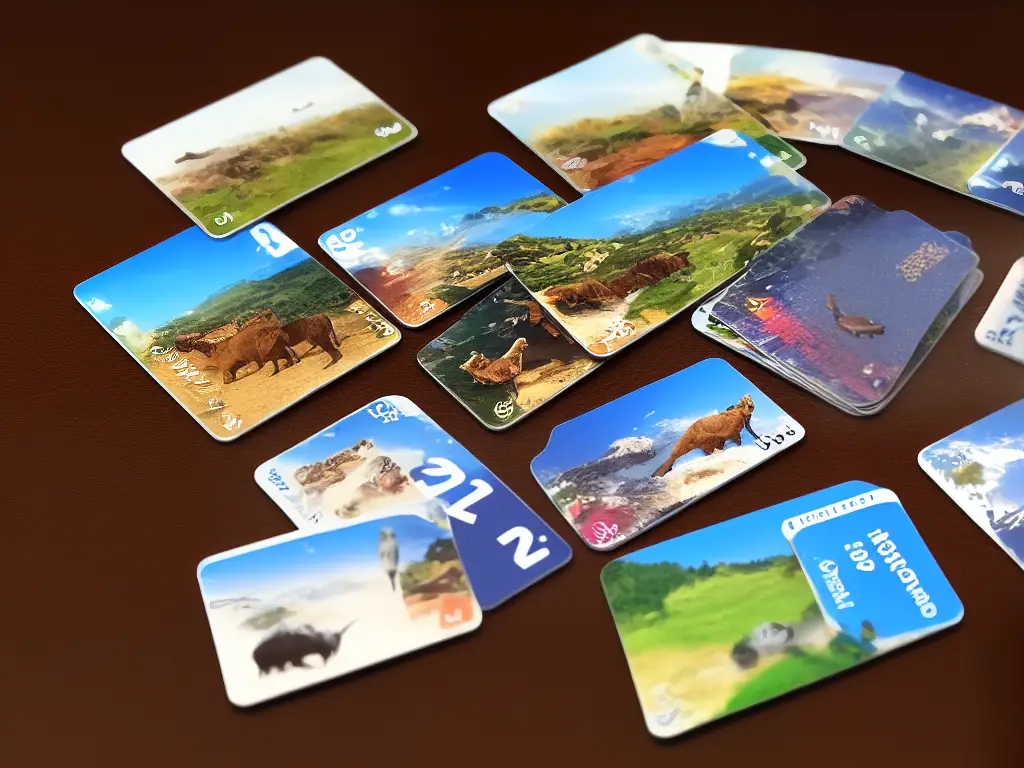
Playing Memory Card Games with Children
It is crucial for children to develop a good sense of focus while playing memory card games, as distractions can make it difficult for them to remember the positions of different cards, leading to frustration and a lack of success in the game. Encouraging children to take deep breaths or count silently in their heads can help them to stay focused while playing. Additionally, removing unnecessary distractions such as excess noise or visual clutter from their surroundings can promote concentration and ultimately enhance their performance in memory card games.
Creating a positive and supportive environment is crucial for enabling children to develop their skills while playing memory card games. Encourage healthy competition and provide praise for achievements, such as successfully matching a pair of cards or remembering a specific card’s location. Avoid comparing or criticizing children’s performance, especially in relation to their peers, as it may demotivate or discourage them from participating in the game. Instead, emphasize the importance of enjoying the learning process and improvement.
Regular breaks during gameplay can help maintain a child’s concentration and prevent them from becoming overwhelmed. Sometimes memory card games can become frustrating, especially for younger children with shorter attention spans. By taking short breaks, children can relax, reset their focus, and return to the activities with renewed energy and interest. Additionally, it is beneficial to include variations and challenges, such as adding more cards or using cards with complex images to keep children engaged and motivated.
Providing guidance and support during play is a vital component of playing memory card games with children. Firstly, explain the rules of the game in a clear and concise manner to avoid confusion. It may also be helpful to demonstrate the game as children tend to learn more effectively through observation. If a child is struggling or becoming discouraged, offer hints or assistance, such as narrowing down the area where they should look for a matching card. However, be mindful not to offer excessive help, as overcoming challenges independently can build resilience and confidence.
Playing memory card games with children is an excellent opportunity to develop social skills, promote interaction, and have fun while learning. Encourage them to play with friends or family members to foster positive communication and collaboration. Playing in groups can also allow for the exchange of strategies and techniques, which can help children continue to develop their skills and memory capabilities. Prioritize enjoyment and building connections while engaging children in memory card games.
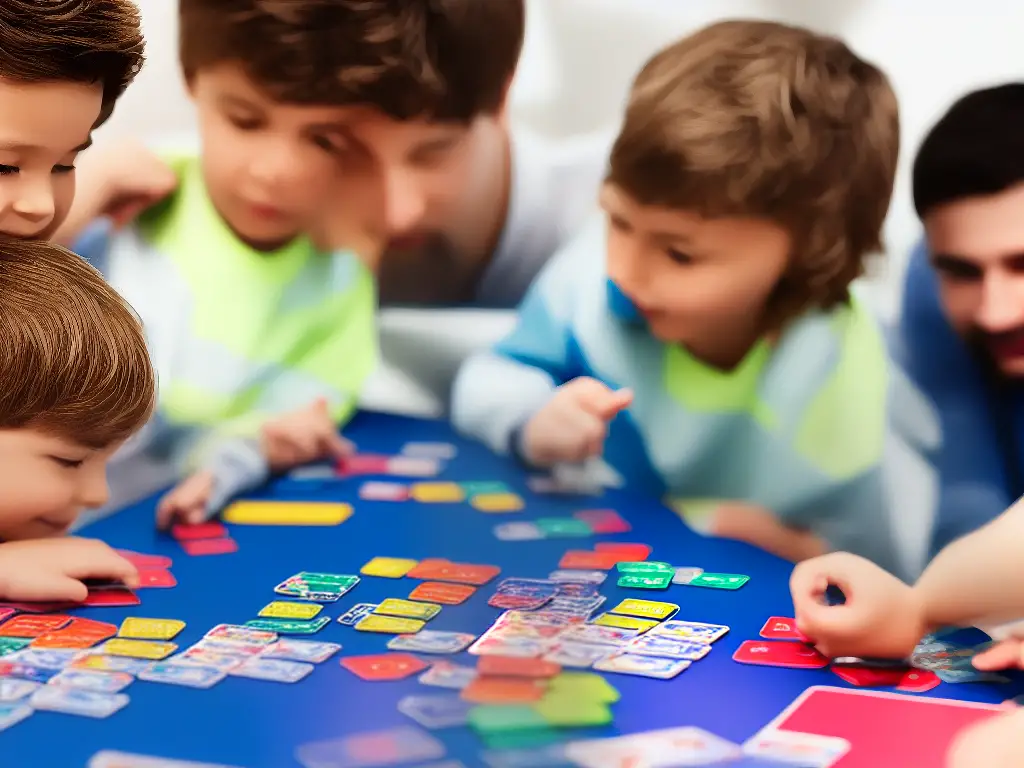
Evaluating and Assessing Memory Growth
Aside from the fun and social aspect, memory card games serve as an effective tool in evaluating and assessing memory growth in children. By tracking a child’s progress as they participate in these games, you can gain valuable insight into their memory development and identify areas where additional focus might be required. This way, memory card games provide not only entertainment but also a method for monitoring and supporting children’s cognitive development.
One key aspect to consider when evaluating progress in memory card games is the child’s ability to recall and match cards from an increasing pool of options. Greater competency in remembering and pairing card images would suggest an improvement in memory skills.
Another important aspect to observe in a child’s memory development is their ability to use strategies and techniques to improve their game. Children who develop more sophisticated methods to recall card locations demonstrate an improvement in their metacognitive skills, which are essential for effective learning. Examples of strategies could include memorizing pairs next to each other, linking images together in their minds, or using visual cues to remember card locations. As a child’s strategies progress and become more comprehensive, this is a strong indicator of growth in their memory capabilities.
The speed at which a child completes a memory card game can also be an effective measure of their memory development. As the child’s memory improves, their speed of recalling card images should increase. This faster pace suggests that the child is developing greater efficiency and accuracy in their memory. It’s essential to note that while speed is important, a focus solely on this aspect may not account for the complexities of memory development or give a comprehensive picture of the child’s progress.
Consistency in performance is another factor to consider when assessing a child’s memory growth in memory card games. Some children may demonstrate significant improvements in a single session, while others might see more gradual progress over time. It is crucial to observe how steadily a child can perform at their peak level and if they can consistently improve over time. A steady progression of improvement can indicate that the child is solidifying their memory capabilities and strategies.
An essential aspect of evaluating and assessing memory growth through memory card games is adjusting the game difficulty or complexity to suit the child’s developmental stage. By gradually introducing more complex games or increasing the number of cards, you can better analyze their progress and pinpoint areas requiring extra attention. For example, if a child struggles with more abstract images or increased card counts, this may be an area to focus on in future exercises. Overall, by closely monitoring a child’s progress and strategizing in memory card games, it is possible to gain a comprehensive understanding of their memory development and improvement.

Digital Memory Card Games
In recent years, memory card games have come a long way from the traditional card sets that have been used for generations. There is now an array of digital memory card games available on many online platforms and mobile apps. These digital games not only provide entertainment for children but also help to improve their concentration, cognitive skills, and memory. The advantage of these games is that they can be accessed anytime and anywhere, making them an attractive and convenient choice for both parents and children. As a result, integrating a mix of traditional and digital memory card games into a child’s learning routine can help to continuously challenge and enhance their memory development.
One appealing feature of digital memory card games for children is the vast range of themes and characters available. From educational content focusing on letters, numbers, and shapes, to popular franchises such as Frozen, Disney, or Marvel superheroes, there is something to grab the attention of every child. These themed games make learning and memory exercises more enjoyable for kids, who are more motivated to play when they can engage with content that interests them. Furthermore, many digital memory card games also offer multiplayer modes, allowing children to interact with their friends and family, fostering social and competition skills.
Despite the numerous benefits, there are some potential drawbacks to digital memory card games for children. Over-dependence on digital devices and screens can have adverse effects on a child’s physical and mental health. Spending too much time on digital devices can lead to eyestrain, poor posture, and reduced physical activity. Moreover, online platforms and mobile apps may sometimes contain advertisements or in-app purchases that may not be suitable for children, and there might be concerns about privacy and data protection.
One alternative solution is to strike a balance between digital memory card games and their physical counterparts. Traditional memory card games still offer similar cognitive and memory-boosting effects, while encouraging children to engage in an activity that is not screen-based. Additionally, playing with physical memory cards can improve fine motor skills, promote tactile learning, and help children become more comfortable with handling various objects. Parents can also supervise their children’s playtime more easily with physical memory card games since it allows for more face-to-face interaction and bonding.
Memory card games have long been accepted as effective tools for developing memory and cognitive skills in children. With the advent of digital technology, these memory-enhancing games now offer a modern twist on the classic tools. Played on smartphones or tablets, digital memory card games are a convenient and engaging way to entertain and educate children. However, it is essential to monitor screen time, balancing it with physical, social, and cognitive activities to ensure a child’s holistic development.
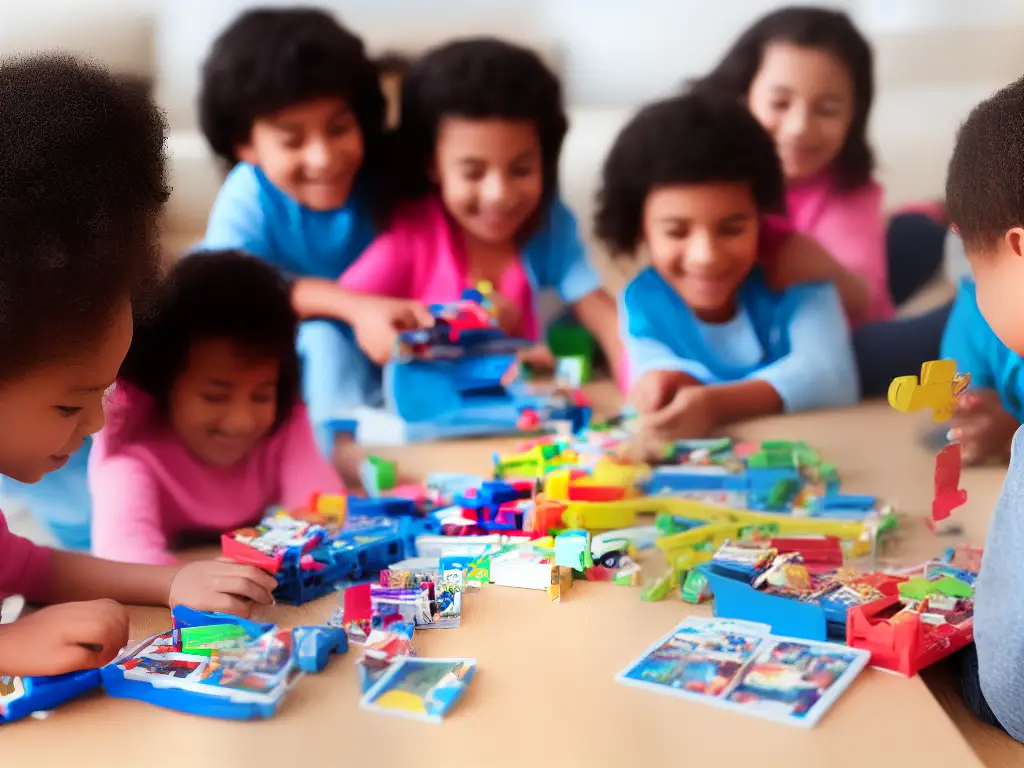
Memory Card Games for Special Needs Children
For children with special needs, memory card games can be especially beneficial in enhancing focus, concentration, and visual recognition. Various types and adaptations of memory card games exist, both physical and digital, specifically designed to cater to the unique learning needs and preferences of special needs children. These adaptations ensure that the games remain engaging, enjoyable, and accessible to children with different abilities, fostering an inclusive learning environment. By striking the right balance between digital and physical memory card games, parents can ensure their children reap the full benefits of these powerful learning tools.
In recent times, a wide range of specialized memory card game offerings has emerged, with game creators focusing on different disability types and learning styles. For instance, some memory card games are designed with larger than usual cards, featuring prominent images and fewer visual distractions, making it easier for children with visual impairments or attention disorders to concentrate and engage with the game. Others utilize unique textures or sounds to allow sensory input for children with sensory processing disorders or who are on the autism spectrum. Additionally, memory card games can be tailored to target specific skill development, such as language, communication, or motor skills, depending on the needs of the child.
Another crucial aspect of memory card games for special needs children is the incorporation of scaffolding and flexibility in the gameplay. Scaffolding refers to the provision of support to help learners transition from one level of difficulty to another. This can include reducing the number of cards in-play, adjusting the rules, or providing clues to help a child progress in the game. Flexibility in the gameplay further ensures that all participants have equal opportunities for success, allowing special needs children to be challenged at their own pace and level of ability.
Memory card games for special needs children can also be instrumental in fostering social skills development. When played collaboratively, these games provide a platform for children with special needs to interact with their peers, facilitating social bonds and communication skills. Memory card games can also help in teaching important life skills such as patience, turn-taking, and cooperation, while also promoting self-esteem and confidence in their abilities.
Memory card games can be an invaluable asset in children’s learning and development, particularly in special needs classrooms or therapy settings. By utilizing the wide variety of types and adaptations, as well as incorporating appropriate modifications to gameplay, memory card games can provide children with special needs the chance to develop essential cognitive, social, and motor skills, all while having fun.

Additional Resources and Community Support
To explore the world of memory card games for children and gather ideas, it is helpful to consult dedicated blogs that cover various aspects of learning and education. Many parenting and educational blogs feature sections or articles on memory card games, offering reviews, strategies, and DIY ideas. These blogs serve as an excellent starting point for anyone looking to learn more, as they are written by parents or educators with firsthand experience in utilizing these games to enhance children’s memory and cognitive skills.
Online communities and forums are also great places to gather insights and knowledge about memory card games for children. These platforms allow users to share their experiences, solutions, and challenges when it comes to incorporating memory games into their children’s daily learning routine. Websites such as Reddit, Mumsnet, and Facebook groups can help you connect with other parents or educators who use memory card games as part of their children’s learning experience. These communities often offer tips, tricks, and support to help maximize the learning potential of these games.
Several organizations and initiatives are dedicated to children’s cognitive development and promoting memory card games. Organizations such as the National Association for the Education of Young Children (NAEYC) and the International Literacy Association (ILA) offer resources, guidelines, and research on children’s learning, which can benefit those looking to incorporate memory card games. NAEYC’s resources, in particular, focus on play-based learning, which includes memory card games and other related activities. By exploring these organizations’ materials, you can gain a deeper understanding of memory card games and the science behind their benefits.
Educational game manufacturers and retail platforms can inform you about the latest memory card games and products for children. Manufacturers often provide detailed game descriptions and highlight the cognitive benefits associated with their products, while retail platforms display user reviews and ratings, helping you make informed decisions when purchasing memory card games. For instance, websites such as MindWare, Fat Brain Toys, and Amazon have extensive catalogs of memory card games suitable for various age groups and educational requirements.
Furthermore, attending workshops or webinars focused on children’s play-based learning and cognitive development can provide valuable insights into effective memory card game strategies. Some educational conferences and events feature expert-led sessions on memory games, discussing recent research findings, sharing best practices, and demonstrating innovative games and game ideas. By attending these events, you can deepen your knowledge of memory card games for children while also networking with other parents, educators, and industry professionals.

Ultimately, memory card games can be a valuable tool in supporting children’s cognitive development, memory growth, and overall learning experience. Choosing the right game, adapting it to the child’s interests and abilities, and employing effective strategies can significantly improve their skills and potentially create lasting memories together. Moreover, exploring the available resources and connecting with a community of parents, educators, and experts can further enrich our understanding of memory card games and their impact on child development, ensuring that we ignite the full potential of these powerful learning tools.
For more games for children, check out this article here!
